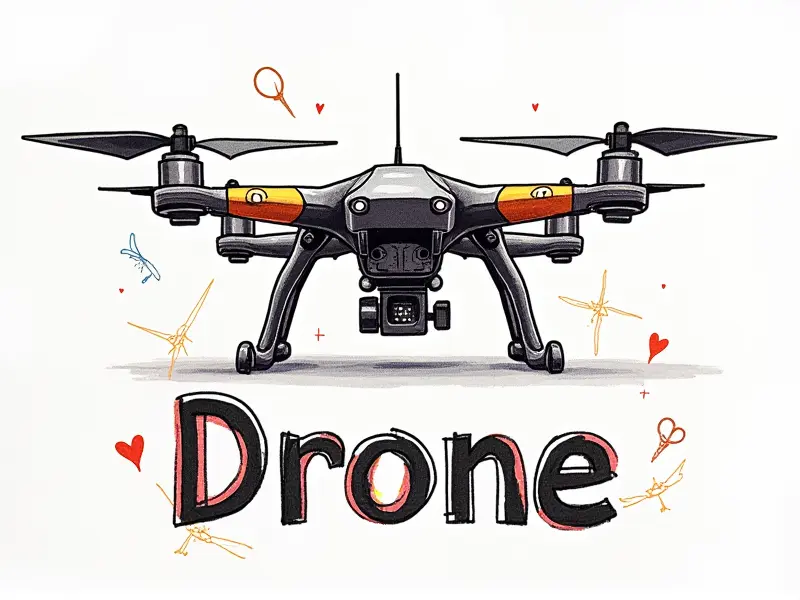How does a camera drone work?

Camera drones, also known as FPV (First Person View) drones or aerial photography drones, have revolutionized the way we capture stunning aerial footage and images. These devices combine cutting-edge technology with innovative design to provide users with an unparalleled perspective of their surroundings. In this article, we will delve into the intricacies of how camera drones operate, exploring everything from FPV cameras to drone mechanics.
How Do FPV Cameras Work?
The heart of any camera drone is its First Person View (FPV) system. An FPV camera captures real-time video footage and transmits it wirelessly to a controller or display device, allowing the operator to see exactly what the drone sees. This technology enables pilots to navigate their drones with precision, even when flying beyond visual line of sight.
FPV cameras typically use high-resolution sensors to capture clear and sharp images. The video feed is then transmitted via radio waves, often in the 5.8GHz or 2.4GHz frequency bands, which are less crowded than other frequencies. This ensures a stable connection between the drone and the ground station.
Inside the Mechanics of Camera Drones
The mechanics of camera drones involve several critical components that work together to ensure smooth operation:
- Motors and Propellers: These are responsible for generating lift and controlling movement. Brushless motors provide efficient power, while propellers come in various sizes and pitches to optimize performance.
- Battery System: High-capacity lithium-polymer batteries supply the necessary energy for sustained flight. Efficient battery management systems help extend flight times and ensure safety.
- Gyroscope and Accelerometer: These sensors work in tandem to maintain stability and balance during flight, allowing the drone to hover steadily or perform complex maneuvers.
- Flight Controller: This onboard computer processes sensor data and controls motor output. It also handles advanced features like GPS positioning and automatic return-to-home functionality.
- Camera Gimbal: A gimbal stabilizes the camera, ensuring smooth video footage even during high-speed maneuvers or turbulent conditions.
Understanding Drone Camera Technology
The technology behind drone cameras is sophisticated and multifaceted. High-definition (HD) sensors capture detailed images and videos, while advanced image processing algorithms enhance clarity and color accuracy. Many drones also feature adjustable aperture settings to control depth of field.
In addition to basic video recording capabilities, some high-end camera drones offer features such as:
- 4K Resolution: Providing ultra-sharp images with incredible detail.
- 3-axis Stabilization: Ensuring smooth and steady footage even during rapid movements.
- Time-Lapse Photography: Allowing users to create stunning time-lapse videos effortlessly.
Exploring the Inner Workings of Drones
The inner workings of a camera drone involve intricate interplay between hardware and software components. The flight controller, for instance, uses sophisticated algorithms to interpret sensor data and adjust motor output accordingly. This enables the drone to maintain stability in various conditions.
Moreover, modern drones often incorporate GPS technology, which allows them to hold precise positions autonomously or follow predefined routes with accuracy. Some models even feature obstacle avoidance sensors that detect nearby objects and automatically steer clear of potential collisions.
Secrets of Camera Drone Functionality
To truly understand how camera drones function, it's essential to delve into their underlying principles:
- Aerodynamics: The design of a drone must optimize lift-to-drag ratio for efficient flight.
- Battery Management: Efficient power distribution ensures optimal performance and extended flight times.
- Sensor Fusion: Combining data from multiple sensors enhances stability and control.
What Makes a Camera Drone Tick?
The core components that make camera drones tick include:
- Motors and Propellers: Generating lift and controlling movement.
- Battery System: Providing the necessary power for sustained flight.
- Sensors (Gyroscope, Accelerometer): Maintaining stability and balance during flight.
- Flight Controller: Processing sensor data and controlling motor output.
- Gimbal Stabilization: Ensuring smooth video footage even in turbulent conditions.
The Science Behind Camera Drones
The science behind camera drones encompasses principles from aerodynamics, electronics, and computer science. Understanding these concepts is crucial for optimizing drone performance and developing new features.
Aerodynamic design plays a critical role in determining flight efficiency. By minimizing drag and maximizing lift, engineers can create drones that fly longer distances with less energy consumption. Additionally, advancements in sensor technology continue to push the boundaries of what's possible in terms of stability and control.
How Do FPV Drones Capture Video?
FPV drones capture video through high-resolution cameras mounted on gimbals for stabilization. The camera transmits real-time footage via a wireless link, allowing pilots to see the drone’s perspective from their ground station or goggles.
The process involves:
- Camera Capture: High-definition sensors capture video feed.
- Wireless Transmission: Video signal is transmitted wirelessly to a receiver.
- Display Output: Footage is displayed on a monitor or FPV goggles for real-time viewing.
Unveiling Drone Camera Mechanisms
The mechanisms behind drone cameras involve intricate engineering and technology. From high-resolution sensors to advanced image processing algorithms, these components work together seamlessly to deliver stunning aerial footage:
- Sensor Technology: High-definition sensors capture detailed images.
- Gimbal Stabilization: Ensures smooth video even during high-speed maneuvers.
- Image Processing Algorithms: Enhance clarity and color accuracy of captured footage.
Demystifying Drone Camera Operations
To demystify drone camera operations, it's important to understand the key components involved in capturing and transmitting video:
- Camera Module: High-resolution sensor captures video feed.
- Gimbal System: Stabilizes the camera for smooth footage.
- Wireless Transmission: Real-time video is transmitted to a receiver or display device.
Exploring FPV Drone Camera Systems
The FPV drone camera system comprises several critical elements that work in harmony to provide an immersive and reliable viewing experience:
- Camera Module: High-definition sensor captures video feed.
- Gimbal Stabilization: Ensures smooth footage even during rapid movements.
- Wireless Transmission: Real-time video is transmitted to a receiver or display device.
In conclusion, understanding the inner workings of camera drones reveals the sophisticated engineering and technology behind these marvels of modern aviation. From aerodynamics to sensor fusion, each component plays a crucial role in delivering exceptional performance and functionality.

